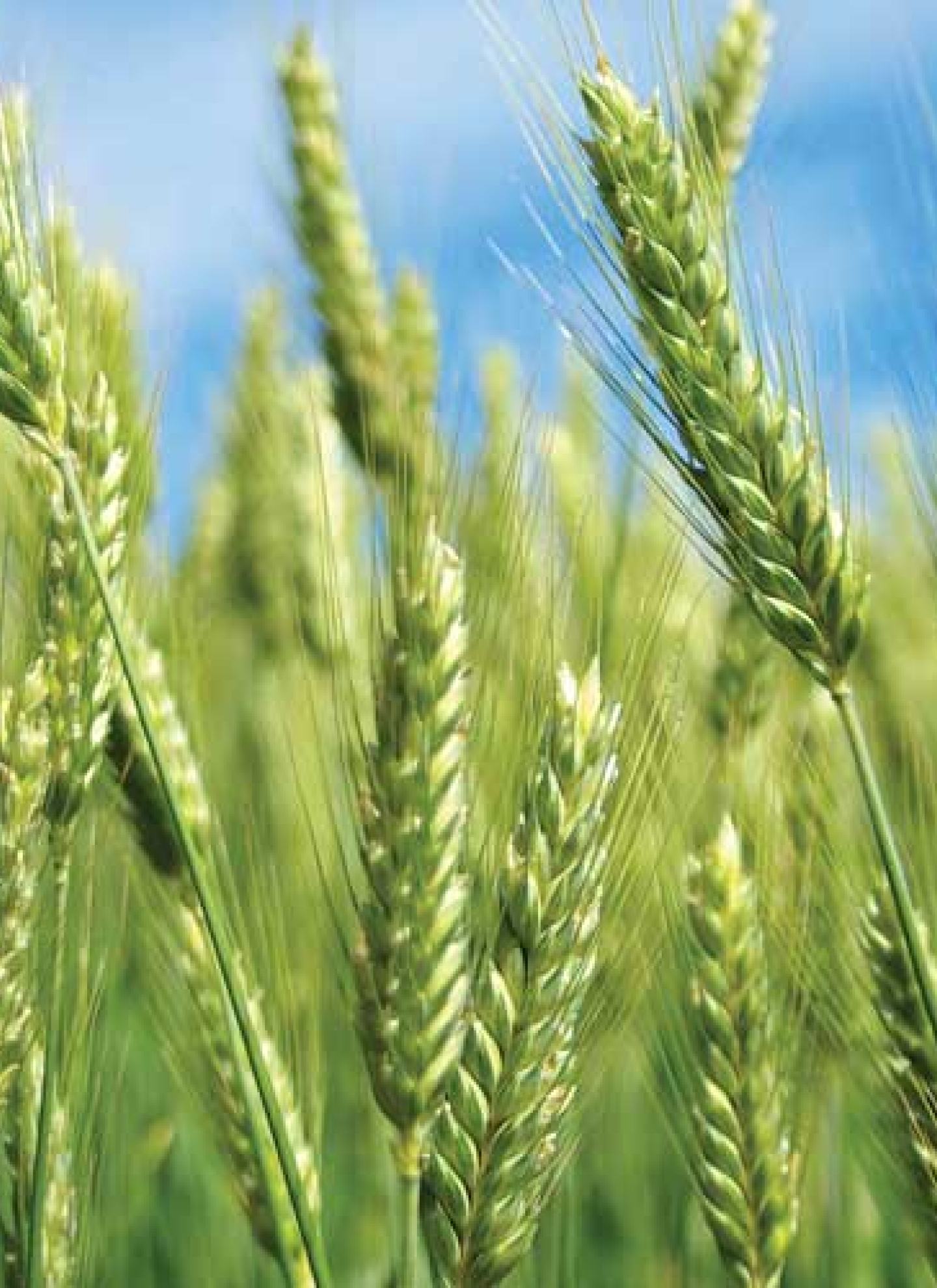See Exirel® in action from three unique perspectives. Hear from farmers, independent agronomists, and retail specialists as they share firsthand experiences with Exirel®, highlighting its reliable pest control, long-lasting protection, and adaptability in Western Australia’s toughest conditions.
David Stead
Independent agronomist David Stead explains how he manages unpredictable WA conditions. See why he trusts Exirel® to protect crops from what pests actually eat—not just what they target.
Kirk Whiting
North Cascades farmer Kirk Whiting shares how Exirel® helps save time with fewer sprays, longer-lasting protection, and a more cost-effective approach to pest control.
Monica Field
Retail agronomist Monica Field reveals how she manages tight spray windows and heavy pest pressure. Learn why Exirel®’s quick, effective knockdown gives her confidence in WA’s unpredictable climate.
These perspectives are backed by powerful results in the paddock. Here’s what happened when one WA farmer had an accidental spray miss, creating the perfect side-by-side trial for Exirel®.
Stark display of insecticide effectiveness from spray miss
A spray miss on the property of Stott Redman, at Hopetoun, on the south coast of Western Australia, proved to be a perfect trial for Exirel® insecticide in the control of diamondback moth (DBM) and Native Budworm.
Mr Redman said most winters in the area are cold enough to keep DBM in check but 2024 was warm and dry, allowing the pest to build up.
Their local agronomist recommended an application of Exirel® once DBM numbers reached a threshold on some of the canola, and the area was sprayed as the crop finished flowering.
There was also native budworm grubs and aphids at the time of spraying with Exirel® used as it had activity on both of those pests.
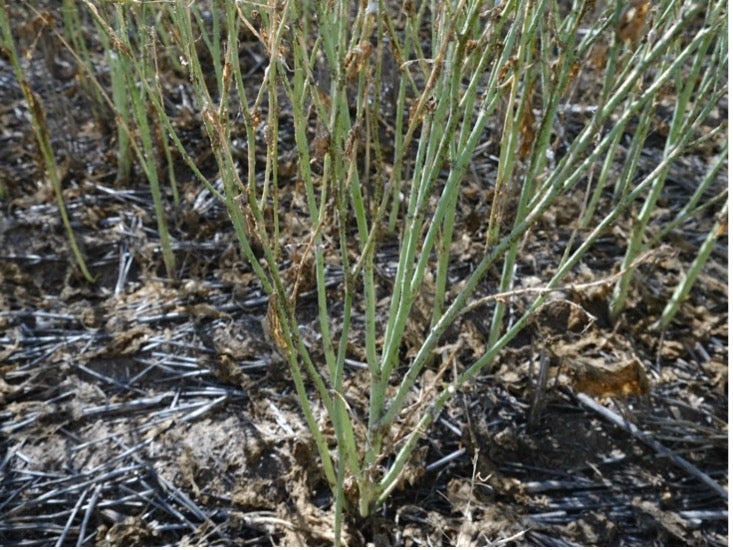
“I thought we were going to get through, but the numbers ramped up so quickly,” Mr Redman said.
Parts of the paddock had previously been sprayed with an aphicide and this information was included in the coverage map for the Exirel® application.
As a result, a small part of the paddock was missed, and proved to be an excellent trial to compare the Exirel® treated and untreated crop.
The unsprayed part of the paddock was decimated with Diamondback moth and Native Budworm damage and the area sprayed with Exirel® was very clean.
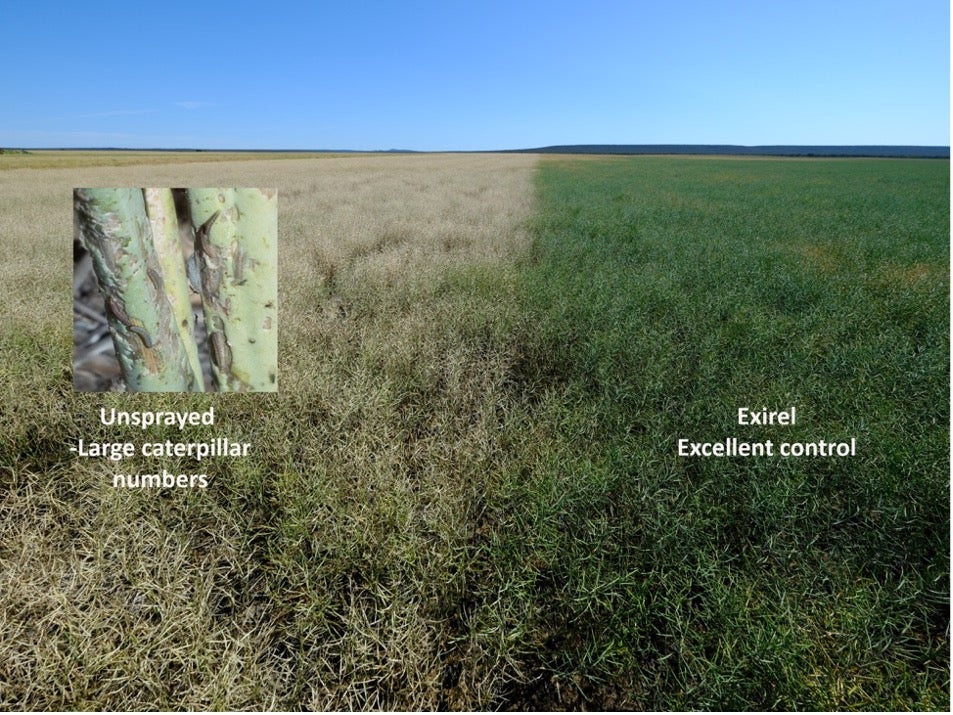
“It was a couple of weeks after the application and I initially thought it was something in the boom – that the boys hadn’t cleaned it out properly,” Mr Redman said.
“When I went in to have a closer look it was major DBM and Native Budworm damage. The difference was almost to the nozzle.”
“I did a sweep in the Exirel® part three weeks after spraying and couldn’t find anything.”
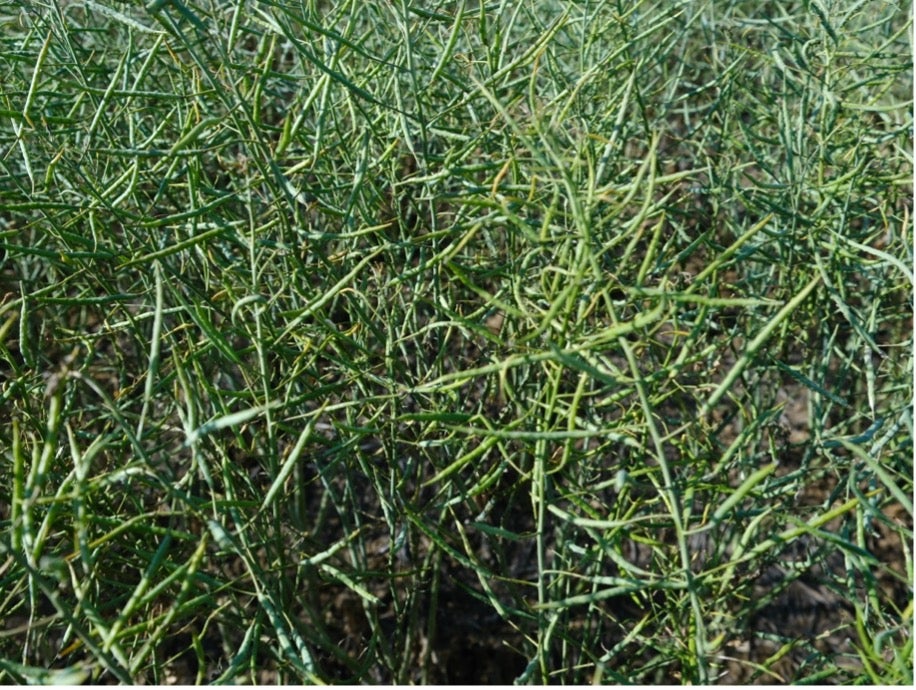
In comparison, the unsprayed section was covered with DBM and Native Budworm caterpillars.
Mr Redman said he’d rubbed out heads in the unsprayed section and the pods and seed were very small.
“They’ve been severely affected,” he said. “I’d expect half the yield.”
Agronomist Cameron Quenby, of South East Rural Traders, at Esperance, said they were conducting regular sweeps for DBM on the Redman property and saw populations explode from the start of August.

By the second or third sweep, numbers were well above threshold, and a decision on Exirel® was made.
“Unfortunately, we had that spray miss and when I went back two or three weeks later it was unbelievable.”
“It was pretty amazing in a bad way. It was just obliterated to the swath line. What didn’t get sprayed was riddled with DBM and Native Budworm. They had torn the plants to pieces in such a short amount of time. It was phenomenal how clear-cut it was.”
Mr Quenby said the DBM has a massive impact on the crop, and it was surprising how their number grew so quickly.
“Even before we sprayed, we saw numbers jump from 30 to 40 up to 150 plus over a weekend with warm, conducive conditions. If you extrapolate that from what were already threshold numbers, the growth was exponential.”
He said Exirel® proved to be an excellent option for DBM and Native Budworm control because of its effectiveness and the length of residual control.
“In most cases, we were spraying quite early, so we were concerned about potentially needing to come back and spray twice. There’s a lot of cost to get a plane in or run a boom over the crop.”
Exirel® sprayed paddocks did not need a follow-up and Mr Quenby said this was due to the residual activity and the ability to work it into an IPM program.
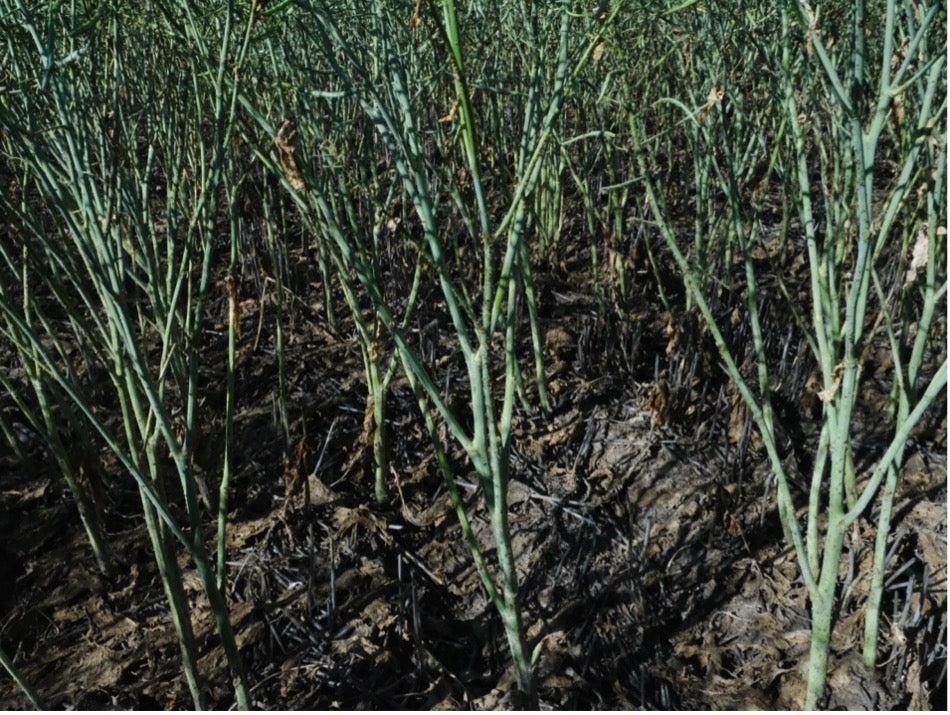
“The biggest thing has been the safety for beneficials,” he said. “It's unbelievable how effective that is. Instead of napalming everything and leaving a void, you're leaving the good guys there to potentially clean up anything else that's left.”
“The residual period of Exirel® has really helped but leaving the beneficials has really pushed out that tail end as well.
“Exirel® was very good across the board. I went back four to five weeks after application to check some paddocks that had had sweeps of 250 to 300 grubs before spraying Exirel®. “I found one grub across four different sweep locations. Across the board, it has been awesome.”
